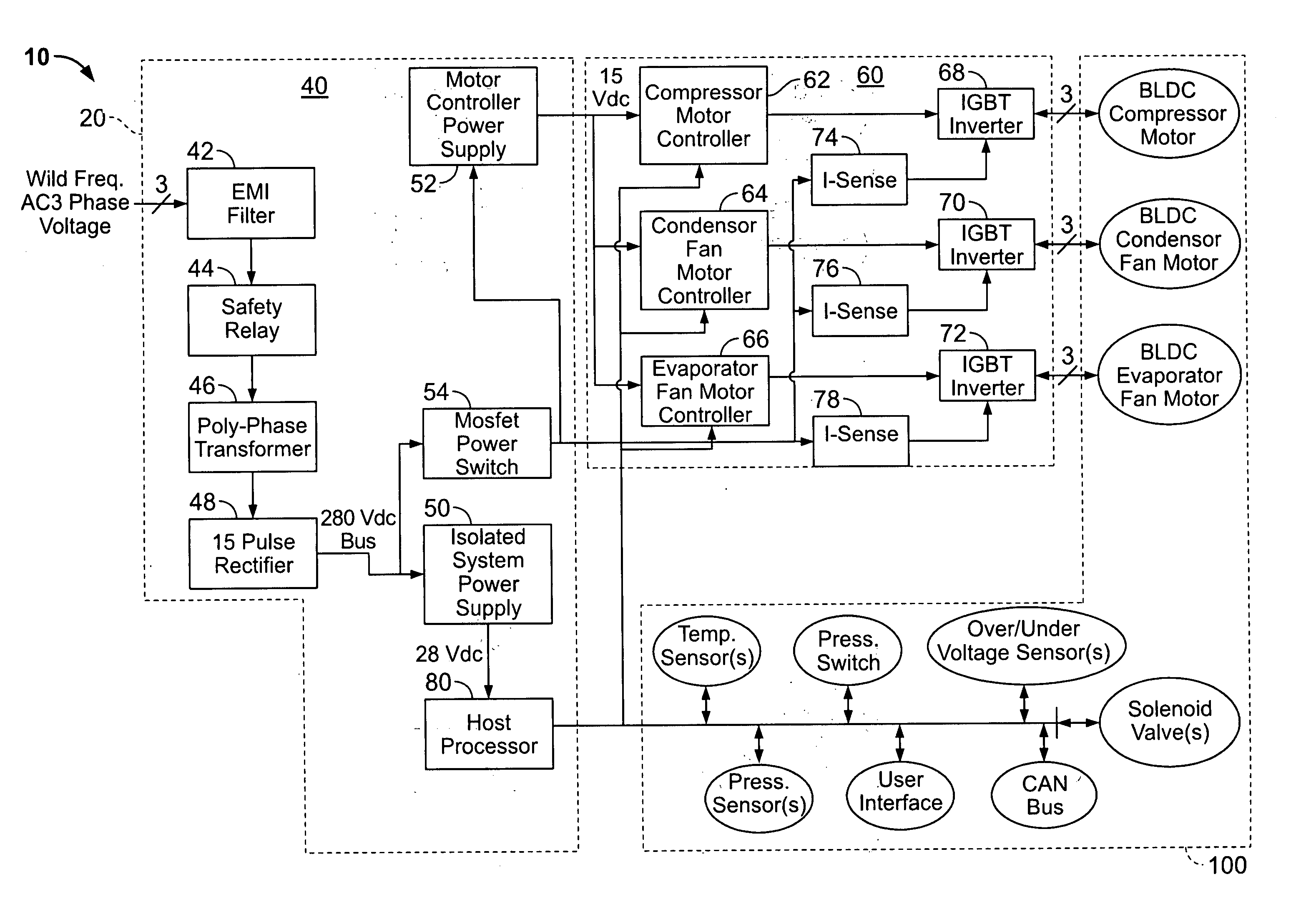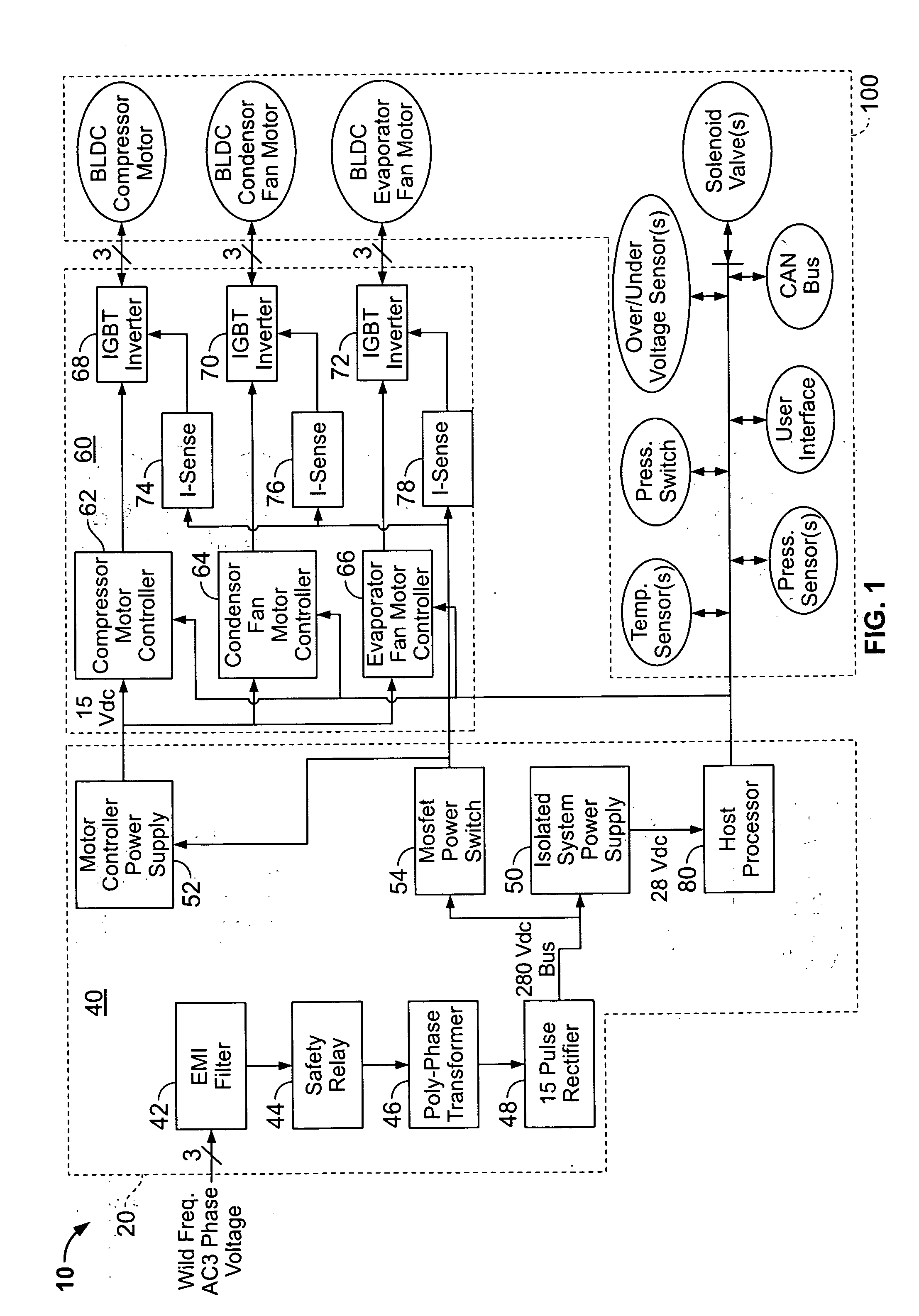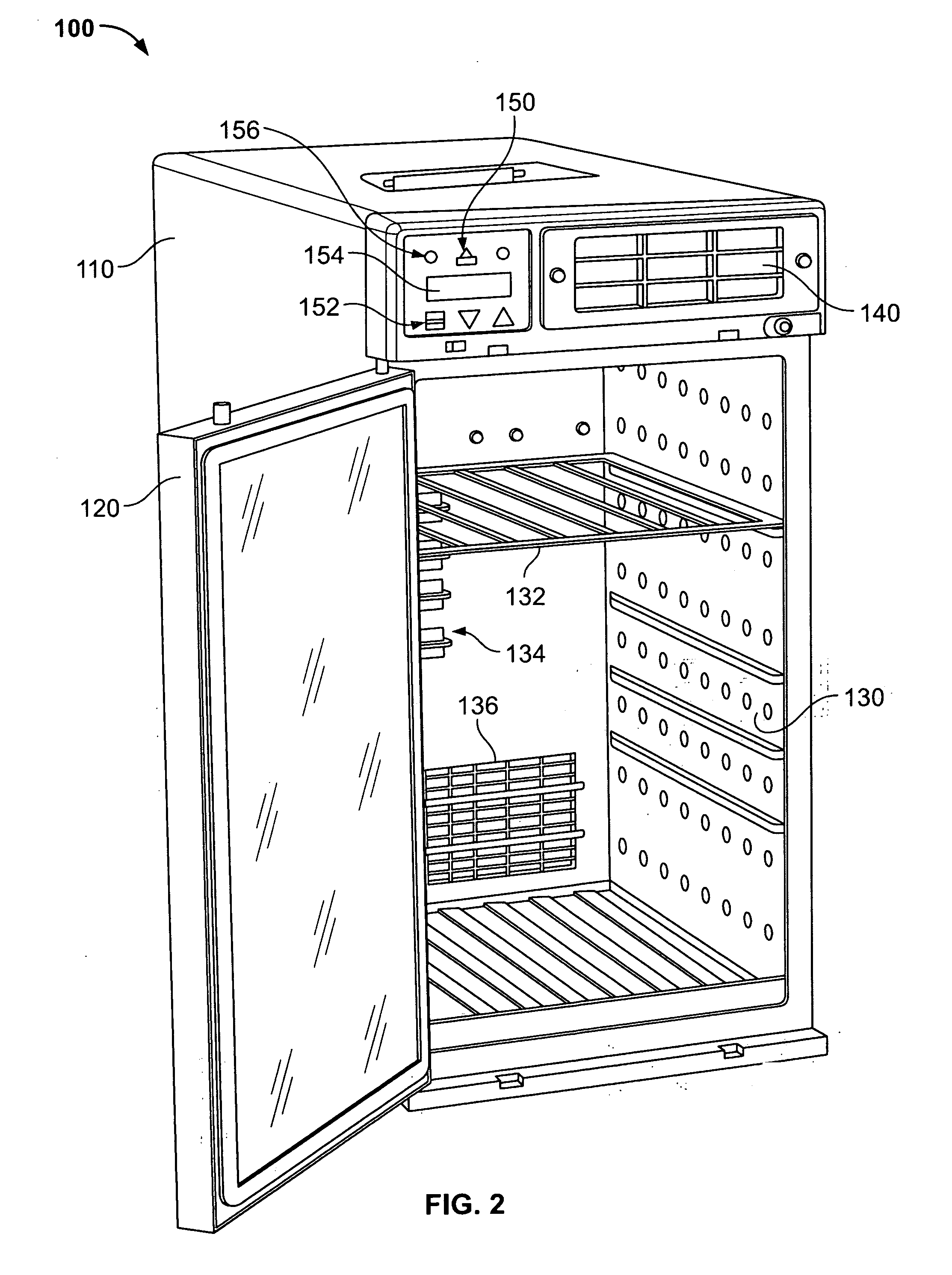Wild frequency avionic refrigeration system and controller therefor
a refrigeration system and avionic technology, applied in refrigeration components, dc circuits to reduce harmonics/ripples, light and heating apparatus, etc., can solve the problems of electromechanical position sensors such as hall effect sensors that are prone to malfunction or failure, and the position sensor data that is communicated by wires is not well suited to avionic applications
- Summary
- Abstract
- Description
- Claims
- Application Information
AI Technical Summary
Benefits of technology
Problems solved by technology
Method used
Image
Examples
Embodiment Construction
[0014]Referring now to the Figures, a wild frequency avionic refrigeration system and a controller therefor are provided. As shown in FIG. 1, an example wild frequency avionic refrigeration system 10 includes a controller 20 and a refrigeration line replaceable unit (LRU) 100 that is operated in closed-loop feedback control fashion by the controller 20. The controller 20 and refrigeration LRU 100 may communicate with each other via a wired (e.g., Ethernet cable, coaxial cable, twisted pair, etc.) or wireless (e.g., RF) connection. The controller 20, as shown, includes a power module 40, a motor control module 60 and a processing unit 80. Although the controller 20 is illustrated to be separate from the refrigeration LRU 100, the controller 20 and refrigeration LRU 100 may alternatively be integral or otherwise unitary. Additionally, although the example controller 20 is illustrated as including the power module 40, the motor control module 60 and the processing unit 80, one or more ...
PUM
 Login to View More
Login to View More Abstract
Description
Claims
Application Information
 Login to View More
Login to View More - R&D
- Intellectual Property
- Life Sciences
- Materials
- Tech Scout
- Unparalleled Data Quality
- Higher Quality Content
- 60% Fewer Hallucinations
Browse by: Latest US Patents, China's latest patents, Technical Efficacy Thesaurus, Application Domain, Technology Topic, Popular Technical Reports.
© 2025 PatSnap. All rights reserved.Legal|Privacy policy|Modern Slavery Act Transparency Statement|Sitemap|About US| Contact US: help@patsnap.com



